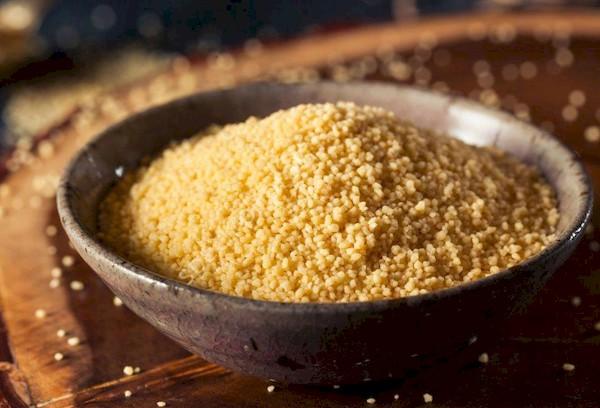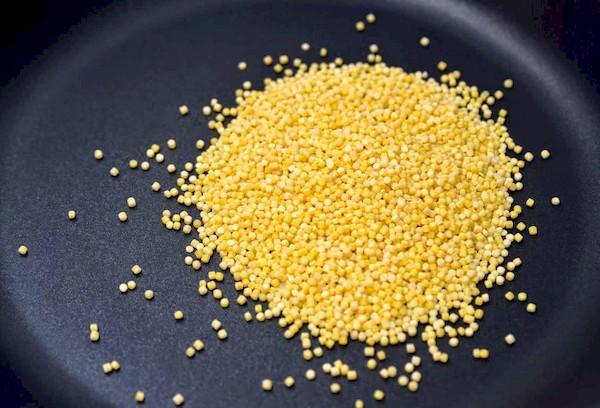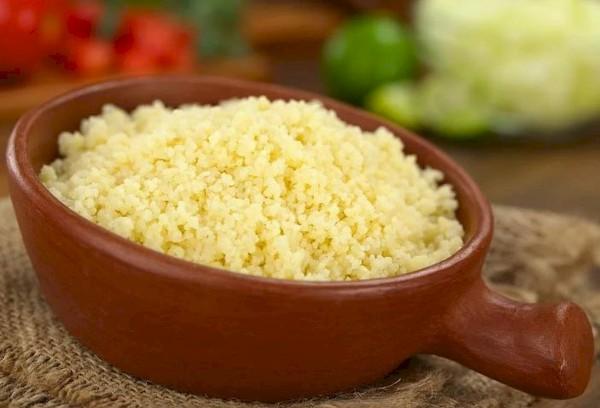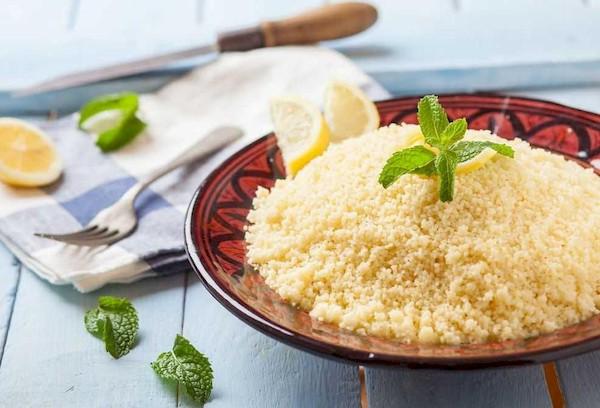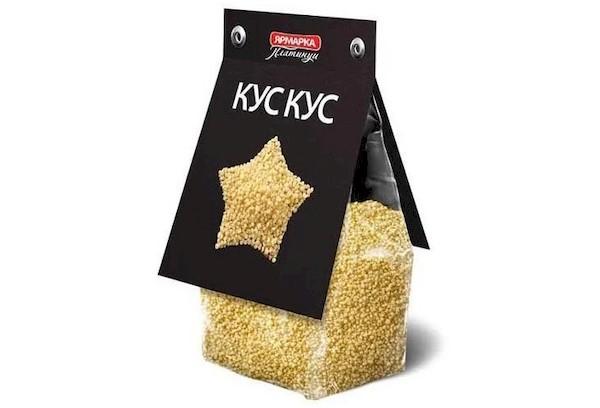Couscous - what kind of grain is it and what is it made from?
Content:
Couscous is both a grain and a pasta product. Most often made from flour, which is made from durum wheat. Depending on the size, there are three types: Moroccan, pearl and Lebanese.
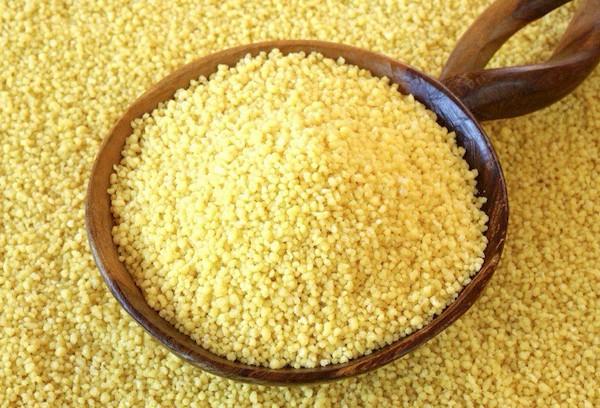
What is couscous made from?
Couscous is a processed grain. The base from which it is made can be different: wheat and semolina, barley or rice. Most often, semolina obtained from durum wheat is chosen.
The manufacturing technology is as follows:
- The selected grain is ground.
- The crushed grains moisturize.
- Small balls are made from the raw material.
- The resulting small circles are dried.
- The finished products are sifted.
The technology is reminiscent of making pasta. One of the main advantages is fast preparation. During production, the cereal is thermally treated, so it is enough to pour boiling water over the product for 10 minutes.
This is interesting! The manufacturing technology came from the countries of North Africa, where back in the 13th century people made cereals by hand.According to some sources, cereals appeared in the 3rd century BC. Cooking turned into a ritual in which only women participated.
What is contained in 100 grams of couscous?
Eating cereals has a positive effect on the health of the body:
- metabolism accelerates;
- the risk of neoplasms is reduced;
- bone tissue is strengthened;
- immunity increases.
A person receives complex carbohydrates and vegetable protein from cereals, which are the basis for activity and vigor. 100 grams of couscous contains the following vitamins and minerals:
| Useful material | Dose | Benefits for the body |
| Potassium | 58 g | Saturates the brain with oxygen. |
| Cellulose | 1.4 mg | Has a beneficial effect on the functioning of the digestive system. |
| Phosphorus | 22 mg | Strengthens bones, controls the acid-base balance and affects the nervous system. |
| Selenium | 27.5 mcg | Acts as an antioxidant that regulates cell function. Useful for the functioning of the thyroid gland. |
| Manganese | 0.8 mg | Strengthens the immune and cardiovascular system. |
| Zinc | 0.2 mg | Stimulates the functioning of the reproductive system. Affects the functioning of the cardiovascular system. Extremely necessary for pregnant women. |
| Calcium | 24.0 mg | Strengthens bones and teeth. Normalizes metabolism. |
| Iron | 1.1 mg | Reproduces red blood cells. Makes the body more resistant to viral cells. |
| Magnesium | 44, mg | Ensures stable functioning of the nervous system. |
Couscous porridge contains 23.2 g of carbohydrates, 0.16 g of fat and 3.79 g of protein per 100 grams of finished product. Calorie content – 112 kcal. The product contains vitamins B3 and B6.
Important! Couscous contains vegetable protein.Nutritionists advise consuming cereals in combination with animal proteins found in fish or meat.
Types of couscous
Currently, culinary experts distinguish three types of couscous.
| Types of couscous | Short description | Cooking time and features |
| Moroccan | It differs from other species in that it consists of tiny grains. The taste is neutral. Consistency – viscous. | Just pour boiling water (broth or water) and wait 15 minutes. |
| Pearl (additional names: ptitim and Israeli) | Visually more reminiscent of pasta. Medium size. The taste is nutty. Made from durum wheat. | It will take 10 to 15 minutes to prepare. |
| Lebanese | The taste is the same as that of pearl. The difference is the large size of the grains. | It takes longer to cook than other types - from 15 to 20 minutes. |
Advice! People with diabetes are advised to avoid eating any type of couscous due to its high gluten content.
What is prepared from couscous: 10 popular dishes
Couscous dishes are on the menus of gourmet restaurateurs. Easy to prepare at home.
10 popular couscous dishes:
- Tabouli with couscous.
- Oriental couscous.
- Summer couscous recipe with herbs.
- Chicken soup with couscous.
- Couscous with fillet and mushrooms.
- Couscous with zucchini and tuna.
- Stewed cabbage with couscous.
- Salad with couscous and eggplant.
- Cod in couscous crust with salsa.
- Lamb with Moroccan couscous.
The dish of the same name, couscous, is considered the national food of the ancient Berbers.
What is couscous? This is a universal ingredient that is added to desserts, casseroles, salads, and soups. Serves as a complete side dish.
Interesting! A special seasoning mixture has been created for couscous, called ras el hanout.Spices reveal subtle flavors in various dishes.
How to choose quality couscous in a store
To choose couscous in a store, it is important to know what the grain looks like. These are balls of the same size and irregular shape, yellow in color. Visually they resemble millet.
Couscous is a cereal made using pasta production technology. On the shelves it is located in the cereal section.
What is the difference between couscous and bulgur
Couscous differs from bulgur in various characteristics.
| Comparison criterion | Bulgur | Couscous |
| What grain is it made from? | Crushed wheat, which is doused with boiling water | Specially processed durum wheat, some varieties of cereals. |
| Taste qualities | Slightly sweet, neutral | Soft, neutral |
| Cooking time | The product is boiled for 20 minutes. Absorbs a lot of water. It's boiling hot. | For some types, 5 minutes without cooking is enough. |
| Features of human digestion | Contains less fiber, so it takes longer to digest. | Quickly absorbed |
What they have in common is that couscous and bulgur taste like wheat when cooked in plain water.
Frequently asked questions and answers
How to make couscous more crumbly?
After the cereal has stood in boiling water, beat with a fork.
What foods go best with couscous?
Cereals are in harmony with pumpkin, quince, zucchini, lamb and fish.
Is it necessary to rinse couscous before cooking?
No, the washing step is skipped. The cereal is thermally processed and is ready for cooking without additional manipulations.
